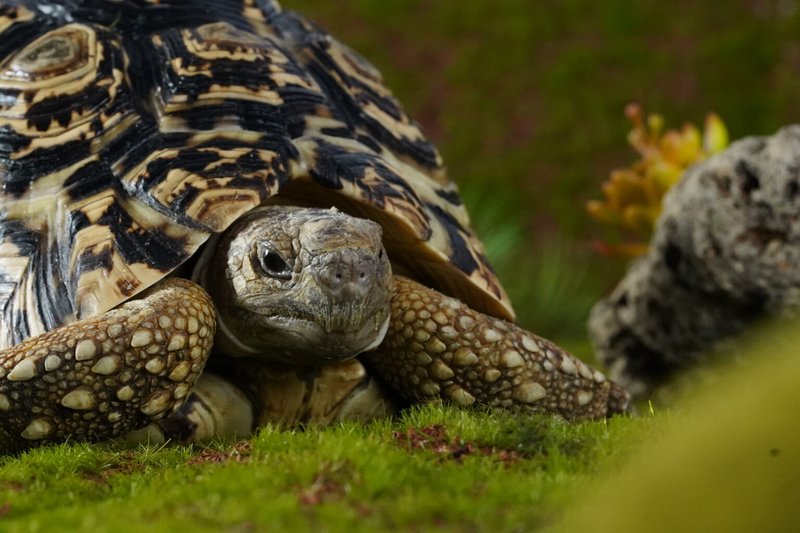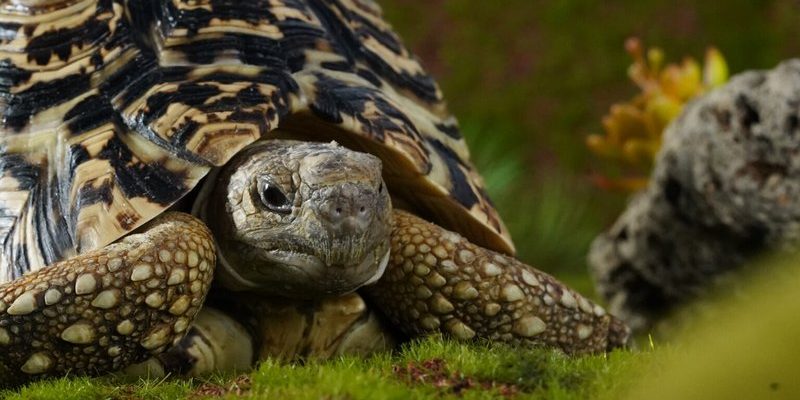
So, if you’re curious about sizing up a leopard tortoise, you’ve come to the right place. Whether you’re considering bringing one into your home or just wanted to learn a bit more, I’ll walk you through everything you need to know about their size, growth patterns, and what factors influence their development.
Understanding Leopard Tortoise Growth
Leopard tortoises are one of the largest tortoise species found in Africa. They start their lives quite small—often around 3 to 4 inches long when they’re just hatchlings. It’s pretty amazing to think about how they grow. Like a puppy that eventually turns into a big dog, these tortoises will gradually increase in size, reaching their full potential over several years.
The size of a leopard tortoise can vary quite a bit based on several factors, including diet, environment, and genetics. Generally, adult leopard tortoises can grow between 10 to 20 inches long. Some particularly well-cared-for individuals may even exceed that range, reaching up to 30 inches in rare cases. That’s like having a pet that won’t quite fit comfortably on your lap!
Factors Influencing Size
Several key factors play a role in how big a leopard tortoise can get. First off, diet is crucial. A balanced diet rich in leafy greens, grasses, and some fruits can encourage healthy growth. If they’re deprived of the right nutrients, they might not grow as big as they potentially could.
Similarly, habitat plays a significant role. Leopard tortoises thrive in warm environments, so if they’re kept in cooler conditions, it can affect their growth. Proper environments that mimic their natural habitat encourage better development overall.
Lastly, genetics shouldn’t be overlooked. Just like humans, tortoises can inherit traits from their parents. Some may be genetically predisposed to grow larger than others, leading to individual differences even among tortoises raised in the same conditions.
Average Size of Adult Leopard Tortoises
Once fully grown, adult leopard tortoises usually fall into a specific weight range. Typically, they weigh anywhere from 40 to 50 pounds, although some may reach weights of up to 100 pounds. You might think of this as having a large dog that doesn’t bark—just a lot of gentle, slow-moving charm!
To help visualize this, consider this breakdown:
| Size Category | Length | Weight |
| Hatchling | 3-4 inches | Less than 1 pound |
| Juvenile | 5-10 inches | 1-10 pounds |
| Adult | 10-20 inches or more | 40-100 pounds |
As you can see, there’s quite a journey in growth from hatchling to adult. It’s fun to think about the transformation!
What Happens During Growth Stages?
During the early years, leopard tortoises experience rapid growth, especially in the first few years. It’s like watching a toddler sprout up quickly, where they seem to grow taller overnight. They need a lot of care during this phase, including adequate space to roam, a warm climate, and the right diet.
Once they reach about 5 to 10 inches, their growth starts to slow down. They may take several more years to reach their adult size. It’s not unlike a teenager who suddenly starts to eat everything in sight but eventually settles down.
Here’s the thing: while they grow, you must also consider the space you provide. For larger tortoises, a spacious enclosure is necessary to allow them to stretch their legs and stay active. A cramped environment can stunt their growth and lead to health issues later on.
Signs of Healthy Growth
You might be wondering how to tell if your leopard tortoise is growing properly. Here are some signs of healthy growth to look for:
- Consistent weight gain: A steady increase in weight is a good sign that they’re getting enough nourishment.
- Strong shell: The shell should be smooth and hardening, which indicates healthy growth and development.
- Energy levels: A lively tortoise that actively explores its surroundings is likely healthy.
If you notice any worrying signs, like lack of growth or lethargy, it’s wise to consult a veterinarian.
Creating the Ideal Environment for Growth
To help your leopard tortoise reach its full size potential, creating an ideal habitat is key. They need a spacious, warm environment with plenty of room to roam. A large outdoor pen or a spacious indoor enclosure works wonders.
You should also include a cozy hideaway where they can feel safe and secure, mimicking their natural environments. Make sure to provide ample access to sunlight or UVB lighting to promote healthy shell growth. Think of it as providing a sunny beach for relaxation and growth—tortoises love basking!
Lastly, don’t forget about humidity! Keeping the humidity levels appropriate can affect their health and shell quality. Too dry or too moist can lead to problems. It’s like finding the perfect balance in a relationship—too much or too little is rarely good!
Common Myths About Leopard Tortoise Size
There are some myths floating around about leopard tortoise sizes that we should clear up. One common misconception is that leopard tortoises are always massive. While they can grow quite large, not every tortoise reaches the maximum size. Just like in people, there’s diversity!
Another myth is that a bigger tortoise is a healthier tortoise, which isn’t necessarily true. A tortoise can be large but still unhealthy if not cared for properly. Healthy growth is more about a balanced diet, proper environment, and regular checks by a vet.
It’s important to be informed and not fall for these myths, as they can lead to poor care decisions.
So, how big does a leopard tortoise get? Typically, they can reach lengths of 10 to 20 inches, with weights ranging from 40 to 100 pounds. Their growth journey is fascinating and requires attentive care from hatchling to adult. Nutrition, environment, and genetics all play a big role in their development.
By creating a nurturing habitat, providing a healthy diet, and understanding their growth stages, you can help your tortoise flourish. Whether you’re a new tortoise parent or just someone who admires these creatures, knowing about their size and growth can deepen your appreciation. Imagine sharing your life with a gentle giant—it’s a truly rewarding experience!

